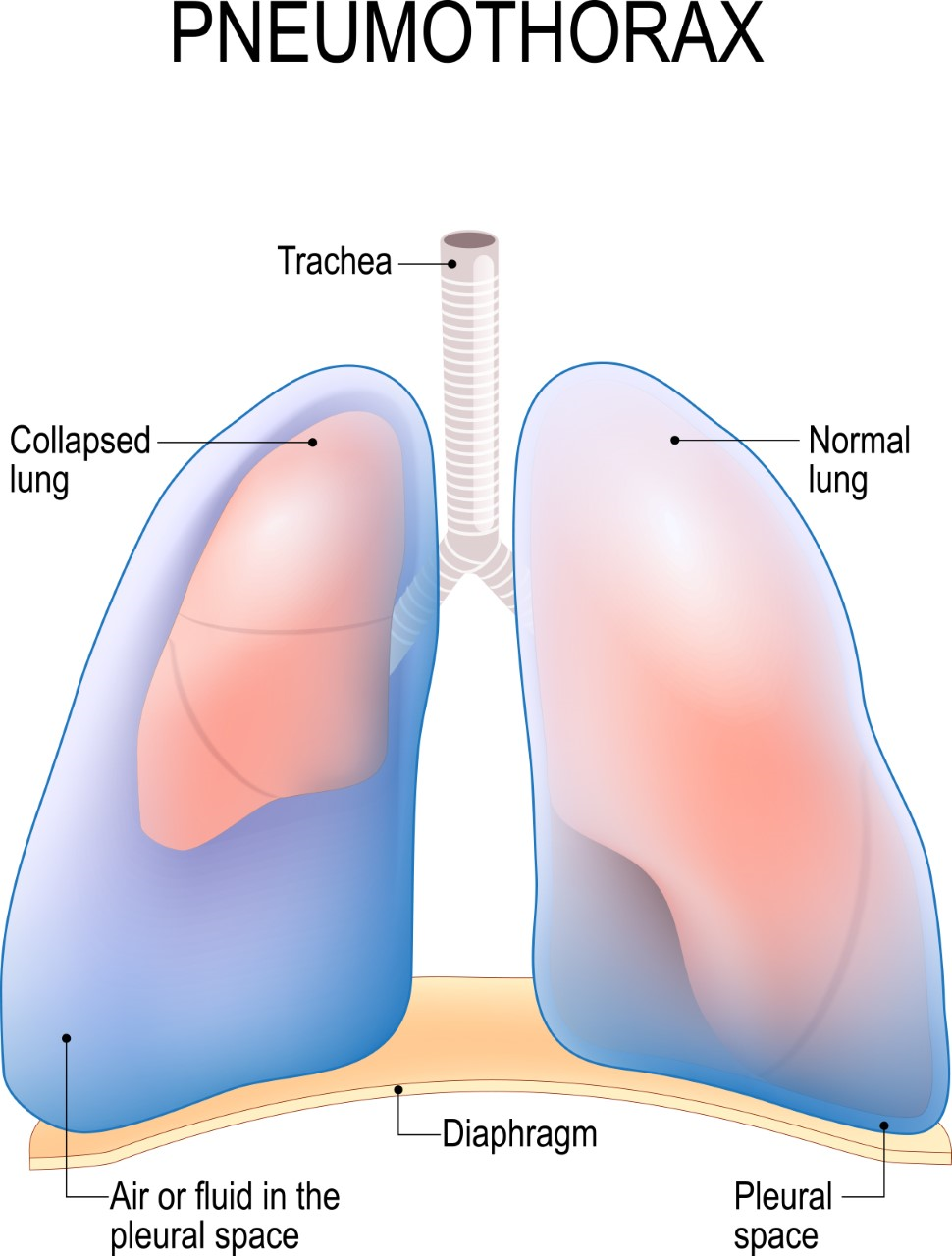Pneumothorax
Your lungs are wrapped in a membrane (like cling wrap) to help protect them called pleura. The space between your ribs and the pleura (cling wrap) is called your pleural space. This space should just have a small amount of fluid and nothing else. A pneumothorax is when there is air in the pleural space. Pneumothorax is not common in CF, but can occur and is more likely in adults with CF.
If you have a small pneumothorax you may not have any obvious changes in your health, other than some mild shortness of breath or pain. If you experience these symptoms suddenly, you should contact your health care team. Your healthcare team may request you have an x-ray to see what is happening in your lungs and then work out what the best treatment plan will be.
A large pneumothorax requires treatment and monitoring. It will probably require you to come into hospital to have a drain placed into the space between your lungs and ribs to drain the air that should not be present; this is called intercostal drainage. You may need intravenous antibiotics at the same time to prevent infection or treat an underlying infection.
A recurrent pneumothorax (if you keep getting air leaks in your pleural space) requires more aggressive management. Your team will discuss different options that may need to be considered.
Pneumothoraces are a complication which impact greatly upon airway clearance. Some forms of airway clearance can increase the pressure in your lungs and can cause more air to go into the pleural space, where it does not belong. You need to continue some form of airway clearance whilst minimising the amount of pressure generated inside your lungs. Gentle exercise should continue. Physiotherapy management will be dependent on the size of pneumothorax and how well or unwell you are.
Some general recommendations that will need to be discussed and decided with your physiotherapist and treating health care team.
Small Pneumothorax
- Stop PEP and other forms of positive pressure therapy
- Use techniques such as active cycle of breathing and autogenic drainage to assist with sputum clearance
- Ensure your lungs are as hydrated as possible to help clear mucus as easily as possible, this may include more regular nebs, showers and general hydration
- Encourage effective huffing and gentle, controlled coughing
- Reduce exercise intensity and avoid arm resistance exercises (such as weights, push ups etc.)
- You should not perform a lung function before you discuss this with your treating doctor
Large Pneumothorax
- If you don’t have a chest drain, your physiotherapist will liaise with the doctor for a treatment plan
- If you do have a drain, then positive pressure therapy may be carefully used in consultation with medical teams. Other options for airway clearance should be considered, for example active cycle of breathing and autogenic drainage
- Ensuring pain is well controlled is very important as well as well as keeping your lungs are as hydrated as possible
- Encourage gentle huffing and coughing while supporting your chest (e.g. hugging a towel) during airway clearance therapy
- Gently increasing your exercise with walking or cycling should be encouraged. Keeping your shoulder moving to avoid stiffness is also important. Avoiding arm resistance exercises (such as weights, push ups etc.) is important.
- You should not perform lung function before you discuss this with your treating doctor










